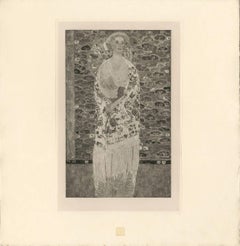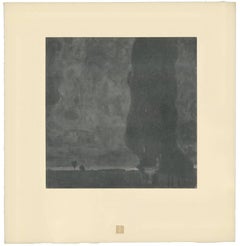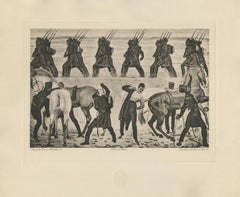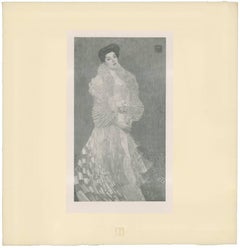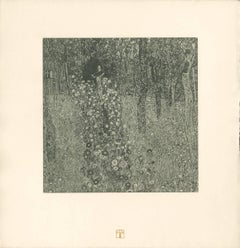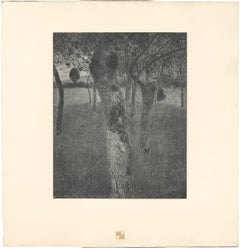Chicago - Art
Early 1900s Vienna Secession Chicago - Art
Paper
Early 1900s Vienna Secession Chicago - Art
Paper
1910s Symbolist Chicago - Art
Paper
1910s Vienna Secession Chicago - Art
Paper
Early 1900s Vienna Secession Chicago - Art
Paper
Early 1900s Vienna Secession Chicago - Art
Paper
2010s Contemporary Chicago - Art
Canvas, Oil
1930s American Modern Chicago - Art
Paper, Charcoal
1890s Art Nouveau Chicago - Art
Lithograph
2010s Contemporary Chicago - Art
Gold Leaf
21st Century and Contemporary Contemporary Chicago - Art
Canvas, Oil
2010s Contemporary Chicago - Art
Archival Pigment
2010s Contemporary Chicago - Art
Panel, Graphite
21st Century and Contemporary Contemporary Chicago - Art
Watercolor, Sumi Ink, Mulberry Paper, Color Pencil
1890s Vienna Secession Chicago - Art
Lithograph
1910s Art Nouveau Chicago - Art
Ceramic
1930s American Modern Chicago - Art
Paper, Charcoal
21st Century and Contemporary Photorealist Chicago - Art
Acrylic, Panel
Early 1900s Vienna Secession Chicago - Art
Paper
Mid-19th Century Qing Chicago - Art
Paper, Watercolor
1920s Vienna Secession Chicago - Art
Paper, Lithograph
2010s Modern Chicago - Art
Acrylic, Archival Paper, Ink
Mid-20th Century American Modern Chicago - Art
Paper, Charcoal
21st Century and Contemporary Contemporary Chicago - Art
Graphite
21st Century and Contemporary Abstract Chicago - Art
Muslin, Wood, Cotton, Thread, Dye
2010s Contemporary Chicago - Art
Mixed Media, Wood Panel
Mid-20th Century American Modern Chicago - Art
Ink, Watercolor, Paper
21st Century and Contemporary Contemporary Chicago - Art
Copper
21st Century and Contemporary Contemporary Chicago - Art
Copper
1920s Vienna Secession Chicago - Art
Paper, Lithograph
2010s Abstract Chicago - Art
Acrylic
1930s American Modern Chicago - Art
Paper, Charcoal
2010s Minimalist Chicago - Art
Canvas, Oil, Acrylic
21st Century and Contemporary Contemporary Chicago - Art
Graphite
Early 20th Century Art Deco Chicago - Art
Paper, Ink
21st Century and Contemporary Contemporary Chicago - Art
Archival Pigment
Mid-20th Century American Modern Chicago - Art
Acrylic, Wood Panel
21st Century and Contemporary Contemporary Chicago - Art
Giclée
Early 20th Century Impressionist Chicago - Art
Canvas, Oil
1910s Symbolist Chicago - Art
Paper
1960s Modern Chicago - Art
Ceramic
Early 1900s Vienna Secession Chicago - Art
Paper
1910s Vienna Secession Chicago - Art
Paper
1910s Expressionist Chicago - Art
Lithograph
Late 20th Century Expressionist Chicago - Art
Canvas, Oil
2010s Realist Chicago - Art
Oil, Panel
2010s Realist Chicago - Art
Gold Leaf
Mid-20th Century American Modern Chicago - Art
Masonite, Oil
19th Century Folk Art Chicago - Art
Cotton, Paint, Pigment
1960s Contemporary Chicago - Art
Screen
21st Century and Contemporary Contemporary Chicago - Art
Sumi Ink, Watercolor, Mulberry Paper, Color Pencil
21st Century and Contemporary Contemporary Chicago - Art
Mixed Media
1910s Expressionist Chicago - Art
Lithograph
21st Century and Contemporary Contemporary Chicago - Art
Oil, Panel
2010s Contemporary Chicago - Art
Oil
21st Century and Contemporary Contemporary Chicago - Art
Sumi Ink, Watercolor, Mulberry Paper
1890s Vienna Secession Chicago - Art
Lithograph
21st Century and Contemporary Contemporary Chicago - Art
Linen, Oil
2010s Contemporary Chicago - Art
Archival Pigment
1910s Expressionist Chicago - Art
Lithograph
